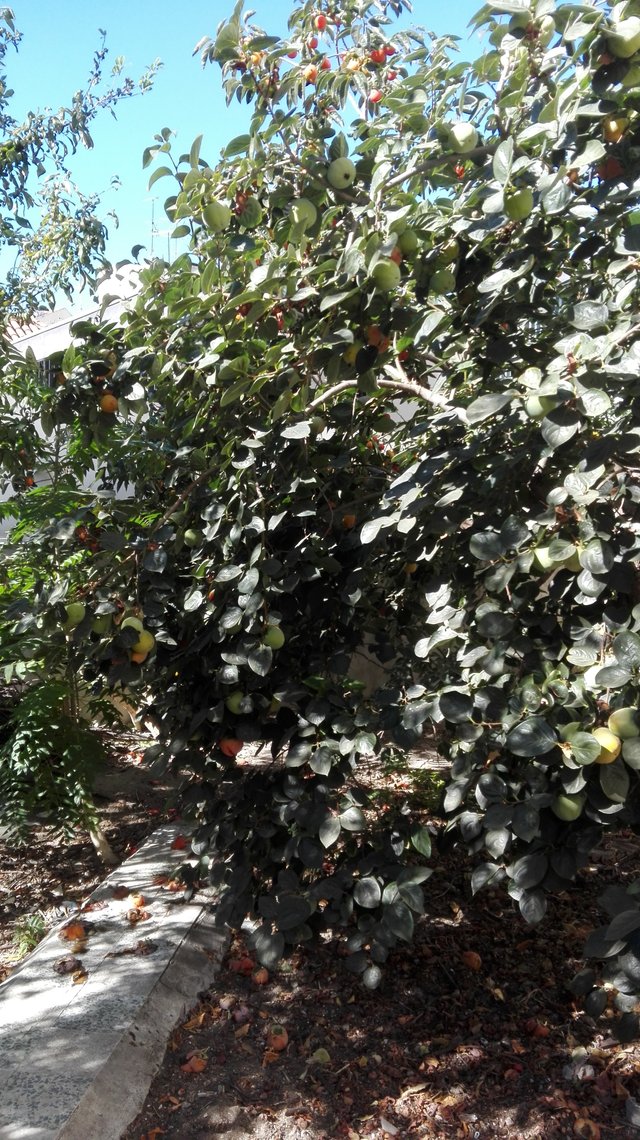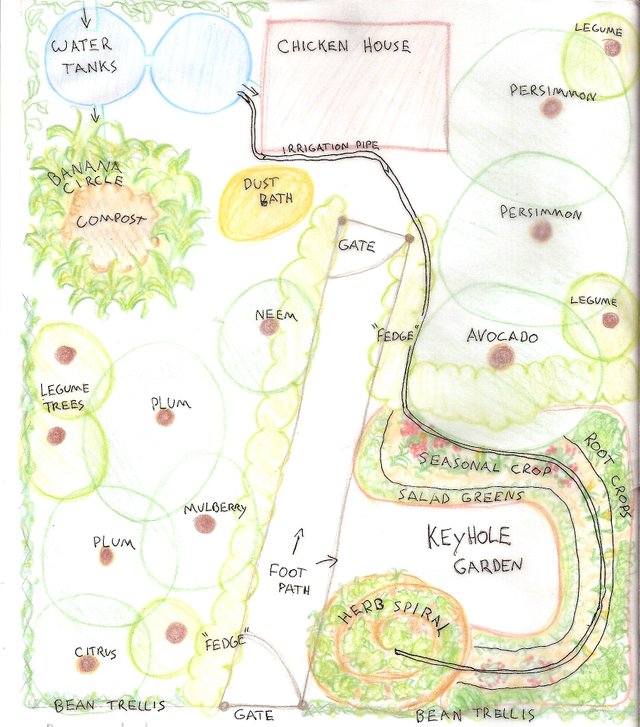Mouraria Site Design
Located in Mouraria, Lisbon. The site is about 30 square metres surrounded by buildings. The only entrance to the garden is through a locked door leading to the lobby area of a retirement home. There are a few producing trees. Two large persimmons, two plums and a tall withered-looking avocado tree. A kiwi grows on a back wall in the shade. As far as I could tell from my brief visit the only area recieving much sunlight was one corner close to the entrance to the garden.
.png)
Oriented North-South (sourced from GoogleMaps)
When I first visited the site it was to harvest some of the persimmons that were dropping of the tree unused, attracting countless wasps and flies. I mentioned to my friend who had brought me there that she might do well introducing some chickens to deal with the mess. So, I put down a little design for her, however, the garden isn't hers and I'm still waiting to see what the owner might say.

Persimmon Tree
The microclimate of this little nook is greatly affected by the large white-painted building immediately to the west, reflecting the morning sunshine. I haven't yet observed the entire run-off roof water potential, however, I did notice that there was a drainage pipe leading just off to the side of the garden. It drains from one of the smaller roofs. This is my most easily harvested catchment of water. By simply leading an extension pipe to two or three rain barrels placed against the wall, enough water may be stored to sustain some chickens and to irrigate a small, well-mulched keyhole garden in that sunny corner.
Being quite close to the Atlantic Ocean, Lisbon gets some strong winds during the winter and the occasional storm. These factors are unlikely to affect the site as it is well sheltered from all directions by the surrounding buildings. Rainfall averages in Lisbon are at 710mm yearly. They follow the typical pattern of Mediterranean climates, i.e. winter rains, summer dry.

Chickens: give eggs, meat, feathers and are a benefit to their environment by scratching, manuring and eating fallen fruit. They need shelter and drink from the water tank.
"Fedge" or food-hedge: provides forage for the chickens as well as fencing to keep them in. Species include: Caragana, Wormwood, Berry bushes.
Water tanks: accept rainwater off the roof and store it for later use. The excess over-spill water goes to the banana circle.
Banana Circle: accepts all organic materials and gives bananas, compost, mulch, and soil water soakage.
Keyhole Garden: gives year-round herbs and salad greens, seasonal crops and storage root crops. It accepts irrigation water from the tanks, compost from the banana circle and manure from the chicken house.
Chicken House: gives shelter to chickens, roof water and vertical space. It accepts kitchen scraps and is light-weight, so it can be easily moved by one person.
Dust Bath: needs sand and gives dust for chickens to clean their feathers.
Bean Trellis: gives vertical growing space and fencing for chickens.
Legume Trees: fix atmospheric ntrogen into the soil, produce mulch and forage for chickens. Species include: Tagasaste (Cystisus proliferus), Mesquite (Prosopsis sp.), Gleditsia triacanthos.
Herb Spiral: is a compact growing space and provides many microclimates for specific plants. It yields year-round herbs.
Annuals include cominho, coriander, black cumin, parsley, endro, funcho, basil, marjoram and chamomile.
Perennials include spring onion, Chinese chives, erva-cidreira, hyssop, oregano, thyme, and segurelha.
Keyhole Garden plants
Salad Greens: Rocket, Swiss Chard (acelga), Lettuces, Mostarda, Spinach.
Seasonal Crops: Tomatoes, Tomatillos, Cucumbers, Cabages, Eggplants, Peppers.
Root Crops: Potato, Cebola, Alho, Cenouras, Turnips, Beterraba, Radishes.